As a dedicated pet owner, there’s nothing more distressing than seeing your furry friend in discomfort or distress. From incessant itching due to allergies to bouts of anxiety, dogs, much like humans, experience a plethora of health issues. While there are many medicines available to help manage these ailments, understanding them is vital for the well-being of our pets. One such medication that’s gained traction in the veterinary world is Hydroxyzine. This versatile drug promises relief for various symptoms, but like any medication, it’s essential to know its ins and outs.
In this blog, we will delve deep into Hydroxyzine for dogs. From its various uses and recommended dosages to potential side effects, we’ve got you covered. We’ll even touch upon natural alternatives that can complement your dog’s treatment plan. So, whether you’ve just heard of Hydroxyzine or are considering it for your four-legged buddy, join us on this informative journey to make the best healthcare decisions for your pet.
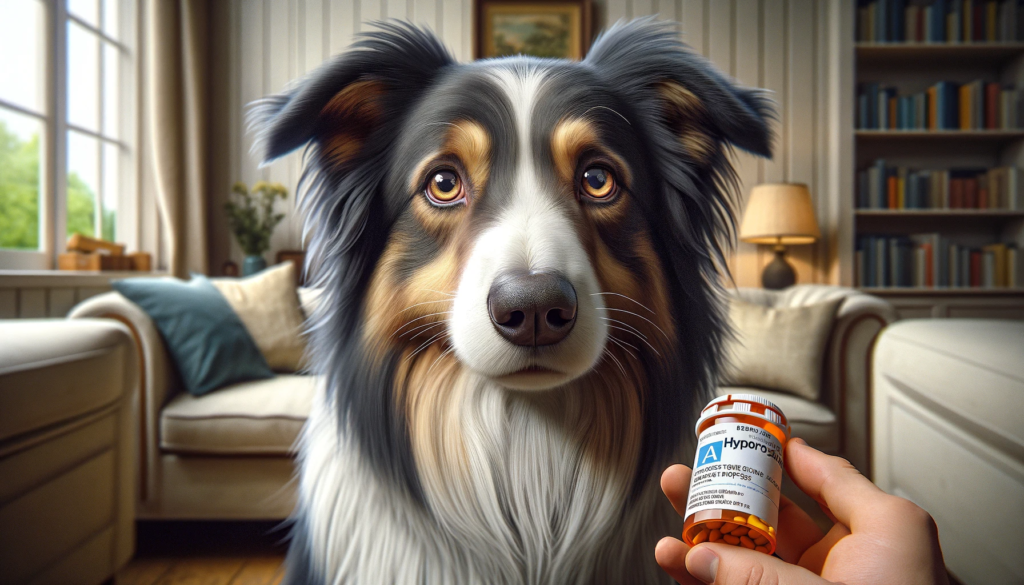
What is Hydroxyzine?
Hydroxyzine, an antihistamine, primarily blocks or reduces the effects of the chemical histamine in the body. The body produces histamine in response to an allergic reaction, leading to symptoms like itching, hives, runny nose, and watery eyes. By blocking the action of histamine, Hydroxyzine helps in alleviating these symptoms.
Developers initially created Hydroxyzine for human use in the 1950s. However, over the years, veterinarians discovered its benefits for animals, especially dogs, and began prescribing it for various conditions.
Apart from its antihistamine properties, Hydroxyzine also has sedative effects. This makes it useful not just for allergies but also for conditions that require calming the pet, such as anxiety or nausea.
It’s worth noting that while Hydroxyzine can be immensely beneficial, it’s a prescription medication. This means you should only administer it under the guidance of a veterinarian who knows your dog’s health history and specific needs.
In the subsequent sections, we will delve deeper into the different brand names, specific uses, and other pertinent information about this versatile medication. But at its core, Hydroxyzine serves as a testament to the advancements in veterinary medicine, bridging the gap between human and animal healthcare to provide relief to our furry companions.

Brand Names For Hydroxyzine
When discussing medications, the active ingredient delivers the intended therapeutic effect. For us, Hydroxyzine is that ingredient. However, like many drugs, several brand names market Hydroxyzine, which helps consumers recognize it and veterinarians prescribe it. It’s like recognizing a popular tissue paper brand, even when the basic product is simply tissue. Here are some common brand names that sell Hydroxyzine:
- Atarax: Atarax, one of the most widely recognized names, primarily treats itching caused by allergies.
- Vistaril: Another popular brand, Vistaril is often prescribed for its sedative properties, helping manage anxiety in pets.
- Hytuss: Less common than the above two but still a noteworthy name in the world of Hydroxyzine.
- Rezine: A brand that might not be as prominently known but is equally effective as its counterparts.
- Vistazine: Often found in liquid forms, it’s useful for dogs that might have difficulty with oral tablets or capsules.
These brand names, while different in labeling and sometimes in formulation (like added flavors or forms), primarily contain Hydroxyzine as their active ingredient. When considering any of these brands for your pet, it’s crucial to consult with your veterinarian. They will not only guide you to the appropriate brand based on availability and your pet’s preference, but they will also ensure your dog gets the correct dosage and form best suited for its needs.
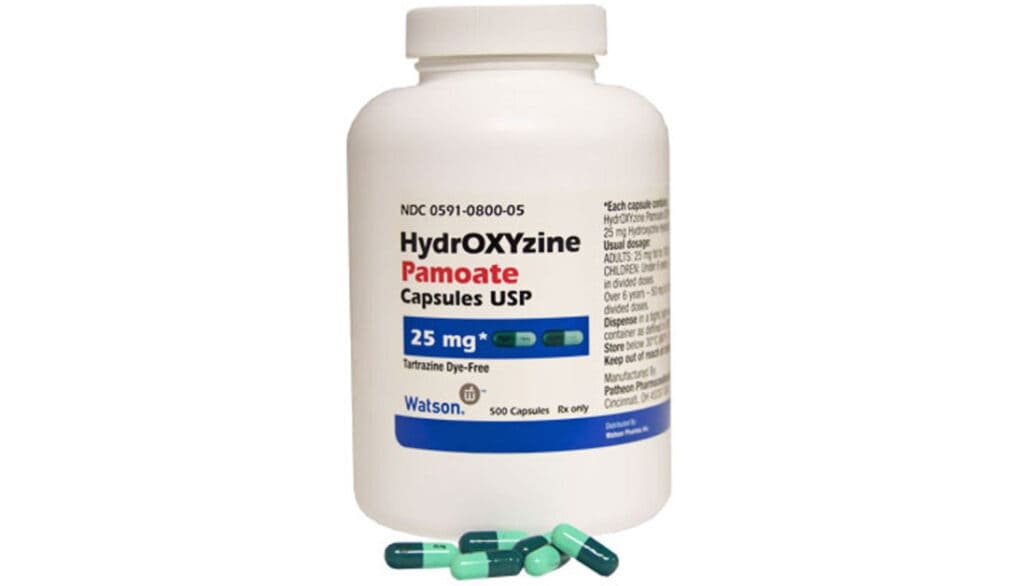
Uses of Hydroxyzine in Dogs
Hydroxyzine, while initially developed for humans, has proven to be a multifaceted tool in the veterinary medicine chest. Its versatility lies in its ability to address various conditions that often plague our furry companions.
- Allergies: Just like humans, dogs too can fall prey to seasonal allergies or react to specific allergens in their environment. These reactions can manifest as itching, hives, or even respiratory symptoms. Hydroxyzine, with its antihistamine properties, works to block or reduce the effects of histamine, providing relief from these allergic symptoms.
- Atopy: A chronic skin allergy often triggered by environmental factors such as pollen, mold, or dust mites, atopy can cause significant discomfort for dogs. Regular itching, redness, and inflammation are common signs. Hydroxyzine can help manage these symptoms by reducing the allergic response.
- Dermatitis: This general term for skin inflammation can be due to a myriad of causes, including allergies, irritants, or even underlying health conditions. Hydroxyzine’s anti-inflammatory and antipruritic (anti-itch) properties make it a suitable option for alleviating the distress associated with dermatitis.
- Nausea: Beyond its allergy-relieving capabilities, Hydroxyzine also possesses antiemetic properties, meaning it can help reduce nausea and prevent vomiting. If your pet is experiencing gastrointestinal upset or nausea due to motion sickness, Hydroxyzine might be a recommended choice.
- Anxiety: The sedative effects of Hydroxyzine are not just useful for its anti-nausea properties. These calming effects can also be beneficial for dogs that experience anxiety, be it from environmental factors like thunderstorms or situational triggers like vet visits. Hydroxyzine can help keep them calm and reduce anxiety-driven behaviors.
It’s imperative to understand that while Hydroxyzine is effective, it isn’t a cure. Instead, it manages and alleviates symptoms. It’s often used in conjunction with other treatments or lifestyle changes to ensure a comprehensive approach to your pet’s health.
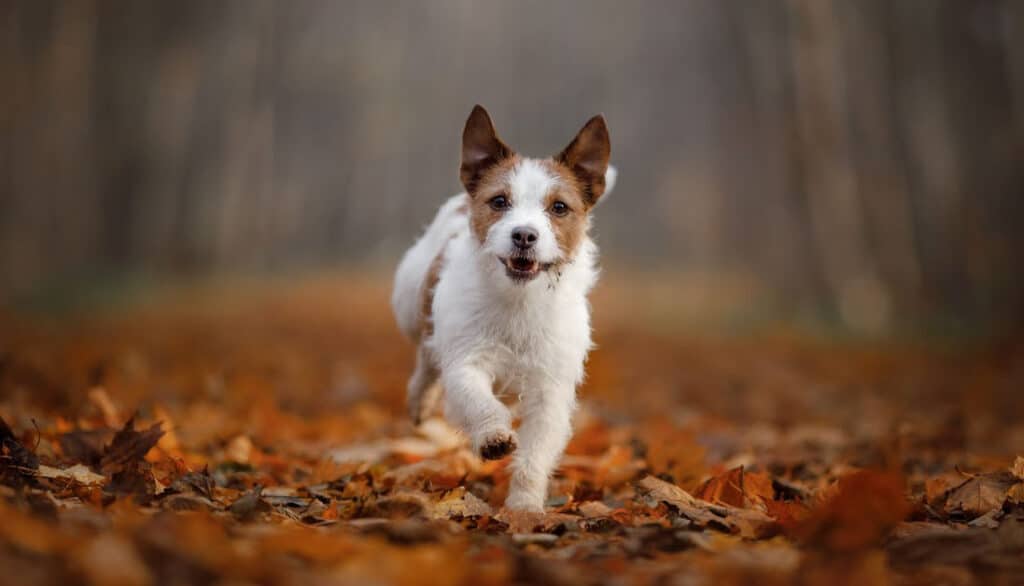
Hydroxyzine Dosage Chart For Dogs
| Weight of Dog | Recommended Dosage | Frequency |
|---|---|---|
| Under 10 lbs | 5-10 mg | Once or twice daily |
| 10-25 lbs | 10-25 mg | Once or twice daily |
| 25-50 lbs | 25-50 mg | Once or twice daily |
| Over 50 lbs | 50-100 mg | Once or twice daily |
Points to Remember:
- Weight-based Dosage: The dosage primarily depends on the weight of the dog, but the specific condition being treated and the dog’s overall health also play a role.
- Frequency: Depending on the severity of the symptoms and the specific condition, Hydroxyzine can be given once or twice a day. For instance, mild itching may require a single daily dose, while severe allergic reactions might necessitate a twice-daily regimen.
- Formulation Matters: The dosage might differ based on the formulation (tablet, capsule, liquid). Ensure you’re using the correct measurement tools, especially for liquid forms.
- Veterinarian’s Guidance: This chart is a general guideline. The optimal dosage for your dog might differ based on factors beyond weight, like age, other health conditions, and tolerance to the medication.
- Monitor for Side Effects: Whenever introducing a new medication or changing dosage, closely monitor your dog for any signs of side effects or adverse reactions.
Always keep in mind that while such charts offer valuable insights, there’s no substitute for personalized advice from a professional veterinarian who’s familiar with your dog’s health history and needs.
Forms of Hydroxyzine
When it comes to administering medication to our pets, having options can be a blessing. Some dogs might be more receptive to liquids over tablets or vice versa. Thankfully, Hydroxyzine is available in multiple forms to cater to different needs and preferences. Let’s delve into these various forms and their specifics:
- Tablets/Capsules:
- Description: These are the most common forms in which Hydroxyzine is available. They come in various strengths, usually denoted in milligrams (mg).
- Usage: Can be given directly to the dog or hidden in treats, food, or pill pockets to make ingestion easier.
- Sizes: Common sizes include 10mg, 25mg, and 50mg, though the availability may vary based on the brand and region.
- Liquid Solution:
- Description: A liquid form of Hydroxyzine, which might be flavored to make it more palatable for pets.
- Usage: Can be given using a dropper or syringe, often directly into the dog’s mouth or mixed with a small amount of food.
- Measure: Ensure you’re using the correct measuring device to provide the right dosage. A dropper or syringe is usually provided with the medication.
- Compounded Forms:
- Description: Some pharmacies offer compounded versions of Hydroxyzine. This means the medication is tailored to the specific needs of the pet, which can be useful for dogs with specific allergies, dietary restrictions, or for those that are particularly resistant to taking medications.
- Options: Can include flavored chews, different flavored liquids, or even topical forms, depending on the compounding pharmacy.
Choosing the Right Form:
Selecting the best form of Hydroxyzine for your dog often comes down to your pet’s preferences and the ease of administration. Some dogs might be more receptive to swallowing a pill, while others might prefer the taste of a liquid solution. Here are some tips:
- Palatability: Liquid forms, especially those that are flavored, might be more palatable for some dogs.
- Ease of Administration: If you find it challenging to give your dog tablets or capsules, liquid forms or compounded chews might be more straightforward.
- Dosage Precision: Liquid forms can offer more precise dosage adjustments, especially for smaller dogs or those in between standard tablet sizes.
Regardless of the form chosen, always ensure you’re administering the correct dosage and consult with your veterinarian about which form might be best suited for your dog’s needs.

Side Effects of Hydroxyzine In Dogs
As with any medication, Hydroxyzine, while beneficial, can come with potential side effects. While many dogs tolerate it well, it’s crucial for pet owners to be aware of possible reactions so they can promptly address any issues that arise. Here’s a rundown of the common and not-so-common side effects associated with Hydroxyzine in dogs:
Common Side Effects:
- Sedation: Given its sedative properties, many dogs might experience drowsiness after taking Hydroxyzine. This is often expected and might even be the desired effect, especially if treating anxiety.
- Dry Mouth: Some dogs might experience increased thirst due to the drying effect of the medication.
- Increased Urination: It’s not uncommon for dogs on Hydroxyzine to urinate more frequently.
- Gastrointestinal Disturbances: This can include symptoms like nausea, vomiting, or diarrhea. However, these are less common and if persistent, should be discussed with a vet.
Less Common Side Effects:
- Incoordination: Some dogs might appear clumsy or unsteady on their feet.
- Rapid Heart Rate: An increased heart rate isn’t typical but can occur in some dogs.
- Respiratory Depression: In rare cases, especially if overdosed, Hydroxyzine can cause a decrease in the respiratory rate, which can be dangerous.
- Hypotension: A drop in blood pressure is a rare but potential side effect.
Signs of an Allergic Reaction:
Just as vets use Hydroxyzine to treat allergic reactions, some dogs might paradoxically have an allergy to the medication itself. Signs of an allergic reaction include:
- Hives or skin rashes
- Swelling, especially of the face, lips, or tongue
- Difficulty breathing
- Rapid or irregular heartbeat
If any of these signs are observed, it’s essential to seek veterinary care immediately.
Points to Consider:
- Monitoring: Always monitor your dog after administering any new medication, including Hydroxyzine. This ensures you quickly notice and address any adverse reactions.
- Dosage: Many side effects, especially the severe ones, are often linked to overdosing. Ensure you’re giving the correct dose, and never administer more than the vet-recommended amount.
- Interactions: Hydroxyzine can interact with other medications, which can amplify some side effects. Always inform your vet of any other medications or supplements your dog is taking.
In conclusion, while Hydroxyzine is generally safe and well-tolerated by many dogs, it’s essential to be aware of potential side effects. If you observe any unusual behaviors or symptoms after administration, always consult with your veterinarian.
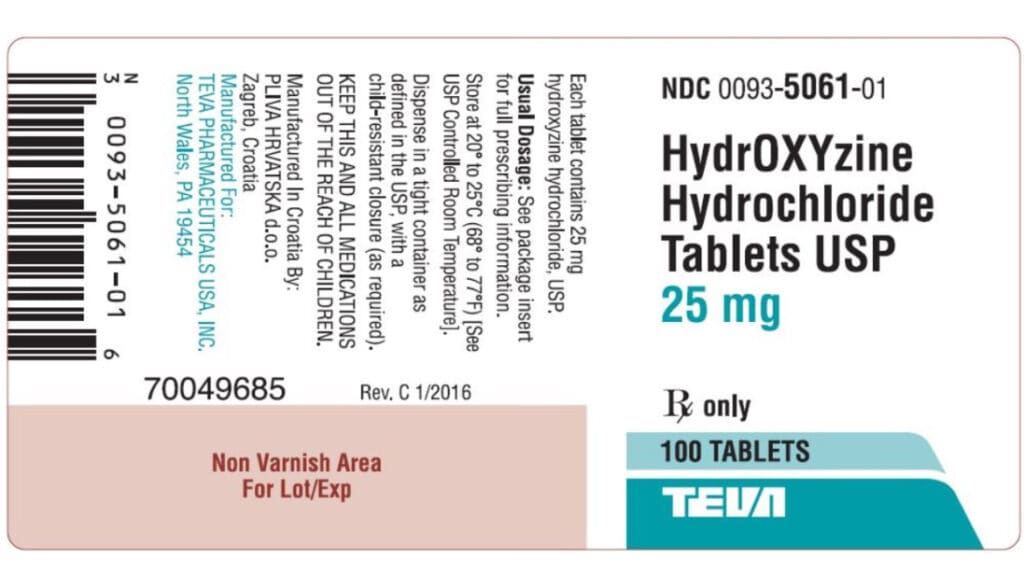
Cautions When Using Hydroxyzine In Dogs
Hydroxyzine can address a range of conditions in dogs, but you should observe certain precautions to ensure your pet’s safety and well-being. Awareness of these cautions can help prevent potential adverse effects and interactions.
1. Pre-existing Conditions:
Certain health conditions may make Hydroxyzine less suitable or require adjustments in dosage. It’s essential to inform your vet if your dog has:
- Liver or kidney disease
- Glaucoma
- Heart conditions
- Seizure disorders
- Prostate enlargement
- Urinary retention issues
2. Other Medications:
Hydroxyzine can interact with other drugs. Always provide your veterinarian with a comprehensive list of medications and supplements your dog is taking. Particular attention should be given if your dog is on:
- Other sedatives or CNS depressants
- Certain anticholinergic agents
- Epinephrine
- Barbiturates
3. Pregnancy and Lactation:
The safety of Hydroxyzine in pregnant or nursing dogs is not well-established. If your dog is pregnant, intending to breed, or lactating, discuss the potential risks and benefits with your vet.
4. Age Considerations:
Elderly dogs or very young puppies might be more susceptible to the effects of Hydroxyzine, requiring a dosage adjustment or close monitoring.
5. Duration of Treatment:
While you can give Hydroxyzine to your dog for extended periods, you should regularly visit your vet to evaluate its ongoing effectiveness and watch for any potential side effects or health changes.
6. Avoid Overdosing:
Always stick to the prescribed dose. If you suspect an overdose, which might manifest as excessive sedation, respiratory depression, or hypotension, seek veterinary attention immediately.
7. Sudden Discontinuation:
While Hydroxyzine doesn’t typically cause withdrawal, always consult your vet before stopping the medication, especially after long-term use.
8. Storage:
Store Hydroxyzine in a cool, dry place, away from direct sunlight and out of reach of children and pets.
Points to Remember:
- Open Communication: Maintaining transparent communication with your veterinarian is crucial. Any changes in behavior, new symptoms, or concerns should be promptly discussed.
- Follow Directions: Always adhere to the veterinarian’s instructions regarding dosage, frequency, and duration.
- Regular Check-ups: Periodic vet visits can help assess the ongoing efficacy of the medication and catch potential issues early on.
In conclusion, while Hydroxyzine offers various benefits for dogs, understanding and observing these cautions can ensure the treatment remains both effective and safe.

Drug Interactions
When introducing any new medication to your dog, it’s essential to be aware of potential drug interactions, as these can affect how the medicine works and may increase the risk of side effects. Hydroxyzine, although a helpful drug for various conditions in dogs, can interact with certain other medications. Here’s what you should be aware of:
1. Central Nervous System Depressants:
- Examples: Barbiturates (like Phenobarbital), benzodiazepines (like diazepam or alprazolam), and certain anesthetics.
- Potential Interaction: Combining Hydroxyzine with other CNS depressants can amplify the sedative effects, leading to increased drowsiness, respiratory depression, or even coma in severe cases.
2. Anticholinergic Drugs:
- Examples: Atropine, some antihistamines, tricyclic antidepressants (like amitriptyline), and certain medications used for urinary incontinence (like tolterodine).
- Potential Interaction: Concurrent use can increase the risk of anticholinergic side effects such as dry mouth, urinary retention, constipation, and potential overheating.
3. Sympathomimetic Agents:
- Examples: Epinephrine, norepinephrine, or certain medications used for asthma like albuterol.
- Potential Interaction: Hydroxyzine can enhance the effects of these agents, potentially leading to an increased heart rate or elevated blood pressure.
4. Other Antihistamines:
- Examples: Diphenhydramine (Benadryl), cetirizine (Zyrtec), fexofenadine (Allegra).
- Potential Interaction: Using Hydroxyzine with other antihistamines can result in additive sedative effects and an increased risk of side effects.
5. Monoamine Oxidase Inhibitors (MAOIs):
- Examples: Selegiline or certain anti-depressants not typically used in dogs.
- Potential Interaction: These can enhance the anticholinergic effects of Hydroxyzine.
Points to Remember:
- Full Disclosure: Always inform your veterinarian of all medications, supplements, and over-the-counter products your dog is taking.
- Monitoring: If your dog must take Hydroxyzine with another drug known for interactions, frequent monitoring and dose adjustments might be necessary.
- Immediate Attention: If you observe any unexpected symptoms or reactions in your dog after administering Hydroxyzine alongside another medication, seek veterinary attention immediately.
While Hydroxyzine is generally safe for many dogs, it’s crucial to be aware of potential drug interactions to ensure the safety and efficacy of the treatment.

How Long Does Hydroxyzine Last?
Understanding the duration of a medication’s effect is crucial, as it not only informs dosing intervals but also gives pet owners an idea of what to expect in terms of relief for their dogs. With Hydroxyzine, its duration of action can be pivotal in managing symptoms like itching, anxiety, or nausea.
1. Onset of Action:
- Typically, after oral administration, Hydroxyzine begins to show its effects within 30 minutes to an hour.
2. Peak Effects:
- Hydroxyzine usually reaches its maximum concentration or peak effects within 2 to 3 hours after administration.
3. Duration of Action:
- For most dogs, the effects of Hydroxyzine can last anywhere from 4 to 8 hours. However, some dogs, especially those more sensitive to the drug or receiving higher doses, might experience longer-lasting sedative effects.
4. Factors Affecting Duration:
- Size and Weight: Smaller dogs might metabolize and eliminate drugs differently than larger breeds.
- Age: Elderly dogs, or very young puppies, might experience prolonged effects due to differences in metabolism.
- Health Status: Dogs with liver or kidney issues might metabolize Hydroxyzine slower, leading to prolonged effects.
- Concurrent Medications: As discussed in the drug interactions section, certain medications can influence how Hydroxyzine is processed in the body.
5. Elimination:
- The liver primarily metabolizes Hydroxyzine, and the body excretes it through urine. The average half-life in dogs (the time it takes to eliminate half the drug from the body) is about 3 to 4 hours, but individual factors can cause variation.
Points to Remember:
- Consistent Dosing: Given its duration of action, Hydroxyzine is often prescribed to be given multiple times a day, especially for conditions that require continuous relief, such as allergies. Ensure you’re administering it at consistent intervals as directed by your vet.
- Monitor for Prolonged Effects: Especially when starting the medication, observe your dog for prolonged sedation or other effects. If the dog seems excessively drowsy or lethargic well beyond the 8-hour mark, consult your veterinarian.
- Avoid Missing Doses: Consistency is key, especially for chronic conditions. If you miss a dose, give it as soon as you remember. If it’s close to the time for the next dose, skip the missed dose and return to the regular schedule. Do not double the dose to catch up.
While Hydroxyzine offers several hours of relief, it’s essential to administer it consistently and be aware of its duration to ensure optimum benefits for your pet.
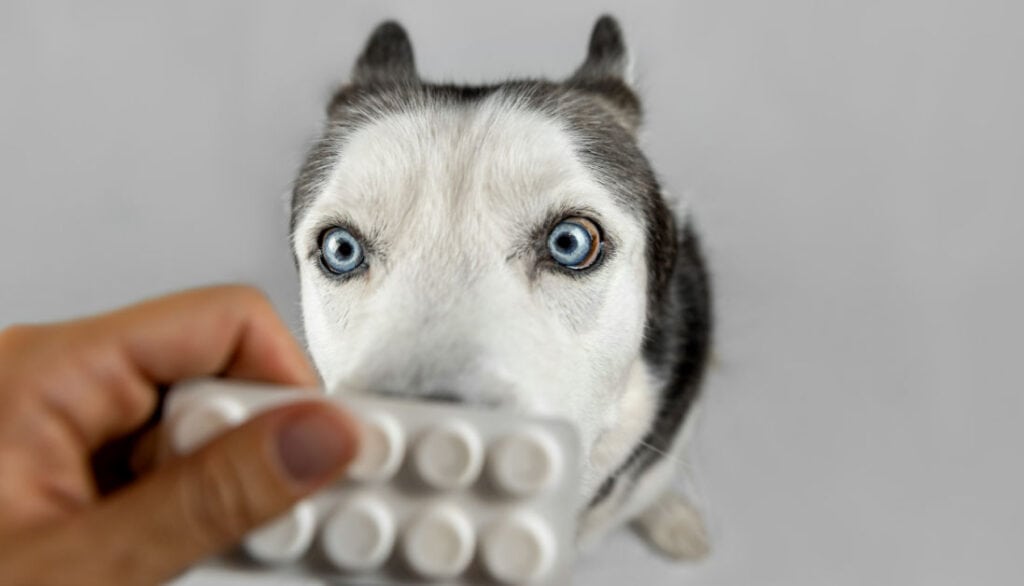
How to Administer Hydroxyzine to Your Dog
Ensuring the proper administration of medication is just as important as the medication itself. When given correctly, Hydroxyzine can offer maximum benefits with minimal side effects. Here’s a step-by-step guide to ensure you’re administering Hydroxyzine safely and effectively to your dog:
1. Read the Prescription Label:
- Always start by carefully reading the prescription label. This will give you information on the correct dosage, frequency, and any special instructions provided by your veterinarian.
2. Measure the Dose:
- If using liquid forms, use a syringe or the provided measuring tool to get the exact amount.
- For tablets or capsules, ensure you’re using the correct strength and number of pills.
3. Administering the Dose:
- Oral Tablets/Capsules: You can give these directly by placing them at the back of the dog’s throat, then gently holding the mouth shut and massaging the throat to encourage swallowing. Alternatively, you can hide the pill in a treat or use a pill dispenser.
- Liquid Form: Gently lift the side of your dog’s lip and insert the syringe or dropper between the cheek and gums. Slowly squirt the medicine into the back of the mouth. Ensure you’re not introducing the liquid too quickly or forcefully to prevent choking.
4. Make it Palatable:
- If your dog is resistant, consider using pill pockets or wrapping the tablet in a small piece of food. This can make the process smoother and less stressful for both of you.
5. Monitor for Reactions:
- After giving the medication, keep an eye on your dog for a little while to ensure there are no immediate adverse reactions or signs of distress.

6. Store Properly:
- Store Hydroxyzine in a cool, dry place, away from direct sunlight and out of reach of children and other pets.
7. Stay Consistent:
- Ensure you’re administering Hydroxyzine at consistent intervals as directed by your vet. This is crucial for conditions that require continuous relief.
8. Missed Doses:
- If you miss a dose, give it as soon as you remember. If it’s close to the time for the next dose, skip the missed dose and return to the regular schedule. Never double the dose to catch up.
9. Seek Feedback:
- If you find it consistently challenging to give your dog Hydroxyzine, or if your dog reacts poorly, seek feedback and alternatives from your vet.
Points to Remember:
- Positive Reinforcement: Reward your dog with praise, petting, or a small treat after administering the medication. This can create a positive association and make future doses easier.
- Safety First: If your dog becomes overly aggressive or stressed, stop and consult with your veterinarian about possible alternative methods or medications.
- Check for Interactions: Especially if introducing any new supplements or medications, ensure there’s no risk of interaction with Hydroxyzine.
While giving medication to pets can sometimes be challenging, understanding the best techniques and practices can make the process smoother. Remember, consistency and patience are key.

Complementary Natural Products to Hydroxyzine for Your Treatment Plan
Dr. Candy’s Recommendations
While Hydroxyzine is a potent medication for various conditions in dogs, sometimes integrating natural products can offer additional relief or act as alternatives for milder symptoms. These complementary products can either boost the effects of Hydroxyzine or offer a natural solution where chemical medications might not be necessary. Always consult with your veterinarian before introducing any new remedies.
1. Omega-3 Fatty Acids:
- Benefits: These can help reduce inflammation, boost the immune system, and promote healthy skin and coat.
- Sources: Fish oil supplements, flaxseed oil, or foods rich in omega-3s like sardines.
2. Calendula:
- Benefits: Known for its anti-inflammatory and wound-healing properties, calendula can be beneficial for skin irritations and minor wounds.
- Application: Available as creams, sprays, ointments, or infusions. Make sure to choose products formulated for pets.
3. Chamomile:
- Benefits: This herb has calming properties and can help reduce anxiety and soothe gastrointestinal upsets.
- Application: Chamomile tea can be cooled and offered in small amounts or applied topically to irritated skin.
4. Probiotics:
- Benefits: They can boost gut health, aid in digestion, and potentially reduce allergic reactions by strengthening the gut’s immune response.
- Sources: Probiotic supplements for pets, fermented foods like kefir.
5. Lavender Essential Oil:
- Benefits: Known for its calming effects, lavender can help reduce anxiety and stress.
- Application: Always dilute essential oils and introduce slowly. A couple of drops can be placed on a bandana or diffused in the room. Ensure the oil is 100% pure.
6. Coconut Oil:
- Benefits: It has anti-inflammatory properties and can promote healthy skin and a shiny coat.
- Application: Can be applied topically to itchy areas or added in small amounts to food.
Points to Remember:
- Consultation is Key: Before introducing any natural product, consult with your vet to ensure it’s safe for your specific dog and won’t interfere with any ongoing medications, including Hydroxyzine.
- Allergies: Just as with any other product, dogs can be allergic to natural remedies. Start with small amounts and monitor your dog for any adverse reactions.
- Quality Matters: Ensure you’re choosing high-quality, organic, and pet-safe products. Especially with essential oils, ensure they’re 100% pure without additives.
Natural products can offer valuable complementary relief alongside or sometimes in place of medications like Hydroxyzine.

Conclusion
Navigating the health and well-being of our furry companions can be a complex journey, filled with decisions about their care and treatment. Hydroxyzine, as we’ve explored, offers substantial benefits for dogs struggling with allergies, anxiety, and other conditions. Its efficacy, however, lies not just in the drug itself, but in our understanding of its proper use, potential side effects, and complementary treatment options.
The world of pet care is ever-evolving, with a blend of modern medications and natural remedies coming to the fore. As responsible pet owners, it’s our duty to stay informed and make decisions in consultation with trusted veterinarians. Whether you’re leaning towards pharmaceutical solutions like Hydroxyzine or considering natural remedies, always prioritize your dog’s unique needs and well-being.
Remember, every dog is individual, and what works best for one might differ for another. Continuous observation, regular check-ups, and open communication with your vet will ensure your dog gets the best care possible. After all, our pets offer us unconditional love, and they deserve nothing less than our unconditional commitment to their health and happiness.
Thank you for joining us on this deep dive into Hydroxyzine for dogs. Here’s to many happy, itch-free, and calm tail-wagging days ahead!
Frequently Asked Questions
Allergies cause histamine release, which causes itchy skin. Hydroxyzine blocks histamine’s effects to reduce itchiness associated with allergies. It can also be used as treatment for itching related to certain types of cancers (eg, mast cell tumors). Like other antihistamines, the response to this drug can vary between animals and be unpredictable, so your veterinarian may try several different antihistamines to see which one works best for your animal. Hydroxyzine may be used with another antihistamine to improve its effects.
The FDA (U.S. Food & Drug Administration) has approved this drug for use in humans, but it is not officially approved for use in animals. The FDA allows veterinarians to prescribe products containing this drug in different species or for other conditions in certainbut it is situations. You and your veterinarian can discuss why this drug is the most appropriate choice.
Many things might affect how well this drug will work in your animal. Be sure to discuss the following with your veterinarian so together you can make the best treatment decisions.
– Other drugs can interact with hydroxyzine, so be sure to tell your veterinarian and pharmacist what medications (including vitamins, supplements, or herbal therapies) you give your animal, including the amount and time you give each.
– Tell your veterinarian about any conditions or diseases your animal may have now or has had in the past.
– If your animal has been treated for the same disease or condition in the past, tell your veterinarian about the treatment and how well it did or didn’t work.
If your animal is pregnant or nursing, talk to your veterinarian about the risks of using this drug.
– Tell your veterinarian and pharmacist about any medication side effects (including allergic reactions, lack of appetite, diarrhea, itching, hair loss) your animal has developed in the past.
This medication should help your animal feel better within 1 to 2 hours. Your animal’s clinical signs should improve after that time. The effects of this medication are short-lived, meaning they will stop working within 24 hours, although the benefits may be prolonged if your animal has decreased kidney and/or liver function.
No drug is 100% safe in all patients, but your veterinarian will discuss with you any specific concerns about using this drug in your animal.
Hydroxyzine SHOULD NOT be used in patients with:
– A history of allergic reactions to it or cetirizine.
– Appointments for allergy testing. Antihistamines interfere with the results of allergy testing. Talk with your veterinarian about when to stop giving the drug.
– With an enlarged prostate, bladder blockage, severe heart disease, or stomach obstruction.
Hydroxyzine should be used WITH CAUTION in animals:
– With a seizure disorder. Hydroxyzine has caused seizures in some dogs and probably should not be used in dogs with a history of seizures.
– That have problems urinating or appear constipated.
– With prostatic enlargement, thyroid problems, or heart disease.
– With severe kidney or liver disease.
– Who are old.
– With glaucoma as it may make the condition worse.
– Working dogs (e.g., guide dogs, search dogs, hunting dogs, sled dogs, rescue dogs), as they may become sleepy and unable to perform their duties.
– Who are pregnant or nursing mothers. Hydroxyzine has caused birth defects in laboratory animals, so it should probably not be used during pregnancy. Hydroxyzine should be used very carefully in nursing mothers, as it is unknown whether the drug crosses into the milk.
If your animal has any of these conditions, talk to your veterinarian about the potential risks versus benefits.
Side effects that usually are not serious include:
– Sedation (sleepiness, fatigue) is the most common side effect. Most animals will become tolerant to this effect with time and will not get as sleepy when given the medication.
– Excitement. Occasionally, hydroxyzine causes some animals to become overly excited.
– Dogs: Muscle tremors (uncommon).
– Cats: Greater thirst, behavior changes (uncommon).
– Lack of appetite, low blood pressure (uncommon).
You don’t have to be overly concerned if you see any of these signs unless they are severe, worsen, or continue to be a problem. Contact your veterinarian if this happens.
Side effects that may be serious or indicate a serious problem:
Dogs: Seizures. These are rare; contact your veterinarian immediately if they occur.
Small overdoses of hydroxyzine are usually not serious, but larger overdoses may be serious. Excessive drowsiness, excitability, tremors, stumbling, collapsing (passing out), higher body temperature, or seizures are all signs of possible overdose. If you witness or suspect an overdose, contact your veterinarian or an animal poison control center immediately for further advice. Animal poison control centers that are open 24 hours a day include: ASPCA Animal Poison Control Center(888-426-4435) and Pet Poison HELPLINE (855-764-7661); a consultation fee is charged for these services.
For hydroxyzine to work, give it exactly as your veterinarian has prescribed. It’s a good idea to always check the prescription label to be sure you are giving the drug correctly.
– Hydroxyzine may be given either with food or on an empty stomach. If your animal vomits or acts sick after receiving the drug on an empty stomach, try giving the next dose with food or a small treat. If vomiting continues, contact your veterinarian.
– Liquid forms of this medication must be measured carefully. Your veterinarian or pharmacist can help by providing special measuring spoons or syringes. Shake the oral suspension well before each use.
– If you have difficulty getting your animal to take the medicine, contact your veterinarian or pharmacist for tips to help with dosing and reducing the stress of medication time.
If you miss a dose, give it when you remember, but if it is close to the time for the next dose, skip the dose you missed and give it at the next scheduled time. After that, return to the regular dosing schedule. Do not double-up or give extra doses.
– Store this medication in the original prescription bottle or an approved dosage reminder container at room temperature.
– Do not allow liquid forms to freeze.
– If your veterinarian or pharmacist has made (compounded) a special formulation for your animal, follow the storage recommendations and expiration date for the product.
– Keep away from children and other animals.
There are no specific precautions required when handling this medication unless you are allergic to it. Wash your hands after handling any medication.
– Do not flush this medication down the toilet or wash it down the sink. If a community drug “take-back” program is available, use this option. If there is no take-back program, mix the drug with coffee grounds or cat litter (to make it undesirable to children and animals and unrecognizable to people who might go through your trash), place the mixture in a sealable plastic bag to keep it from
leaking out, and throw the bag out with the regular trash.
– Do not save leftover medication for future use or give it to others to use.
– Because this drug can cause dry mouth, be sure your pet has access to water at all times.
– Use of this drug may not be allowed in certain animal competitions. Check rules and regulations before entering your animal in a competition while this medication is being administered.
